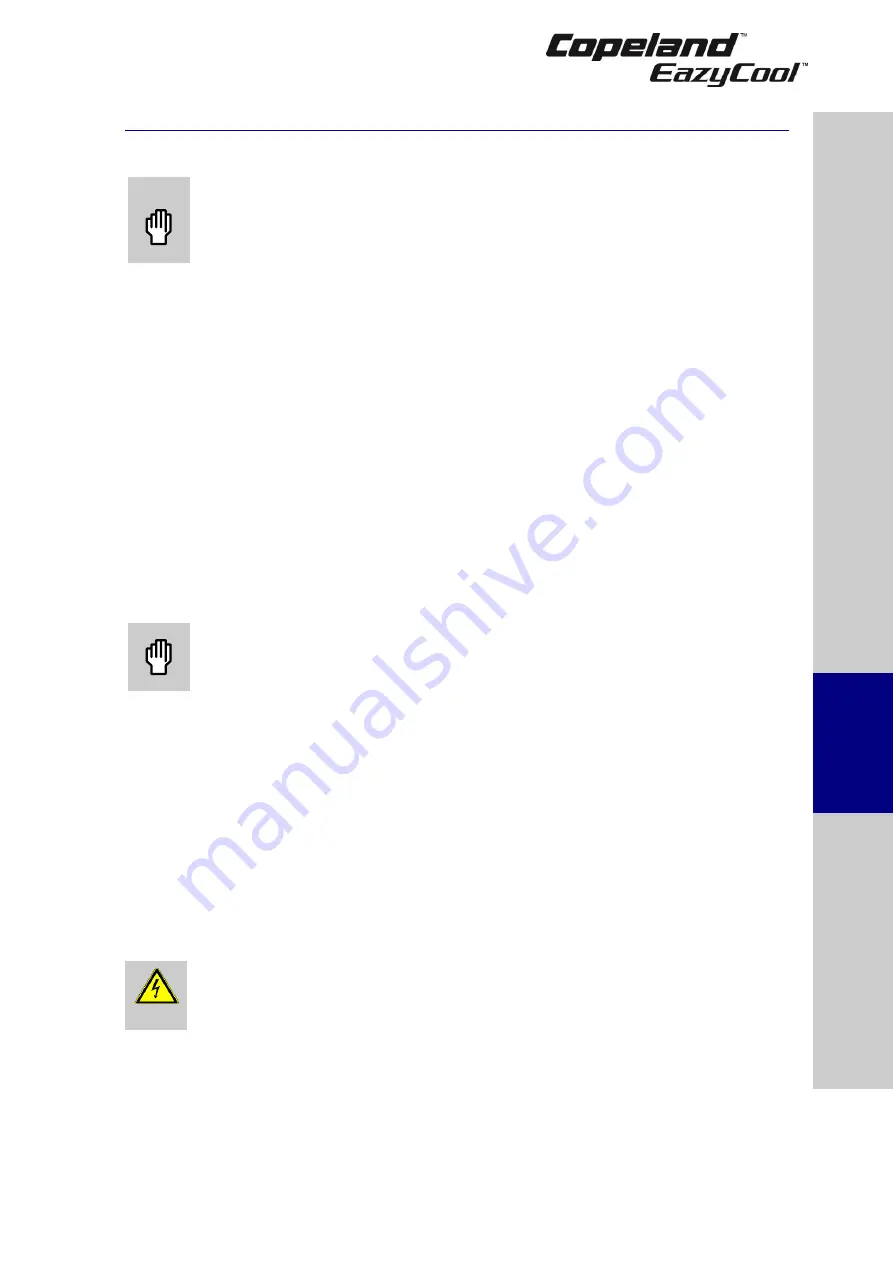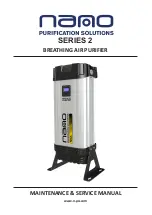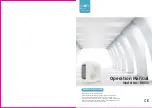
C6.1.6/0117-1017/E
39
5
Maintenance & repair
5.1 Replacing a compressor
CAUTION
Inadequate lubrication! Bearing destruction!
Exchange the accumulator
after replacing a compressor with a burned-out motor. The accumulator oil
return orifice or screen may be plugged with debris or may become plugged.
This will result in starvation of oil to the new compressor and a second failure.
In the case of a motor burnout, the majority of contaminated oil will be removed with the compressor.
The rest of the oil is cleaned through the use of suction and liquid line filter driers. A 100% activated
alumina
suction
line
filter
drier
is
recommended
but
must
be
removed
after
72 hours.
It is highly recommended to replace the suction accumulator, if the system contains
one.
This is because the accumulator oil return orifice or screen may be plugged with debris or may
become plugged shortly after a compressor failure. This will result in starvation of oil to the
replacement compressor and a second failure. When a compressor is exchanged in the field, it is
possible that a major portion of the oil may still be in the system. While this may not affect the
reliability of the replacement compressor, the extra oil will add to rotor drag and increase power
usage.
▪
De-energize the condensing unit before any intervention.
▪
Close valves to isolate the unit from the system.
▪
Recover the refrigerant from the unit and make sure that the compressor is not under pressure.
▪
Release the compressor mounting parts then lift it to replace with a new compressor.
NOTE: For more detailed instructions, please refer to the compressor application guidelines.
5.2 Condenser fins
CAUTION
Acid cleaning! Corrosion of condenser fins!
Do not use acidic solutions to
clean the coil. After cleaning, the fins should be brushed lightly with a proper
fin comb.
NOTE: In order to meet the requirements of the Ecodesign Directive 2009/125/EC with regard
to efficient system operation, ensure the heat exchangers remain clean at all times.
Condenser fins become dirty over time as ambient air is induced to the condenser. Dirty coil surfaces
result in high condensing temperatures and poor unit performance. Regular cleaning is
recommended, the frequency of doing so being dependent on the installation and the surrounding
environment. As a general guide it is advisable to do this at least once every two months.
As a general rule and for a clean environment we recommend that the fins be cleaned with liquid
detergent diluted with clean water. The ZX unit has a well-designed chassis with falling levels towards
a large drainage hole and provided the unit is installed level, any cleaning solution should be able to
drain away. A light brush downward (in the direction of the fins) should be done before washing to
remove heavy deposits.
5.3 Electrical connections
WARNING
Isolating switch "On"! Danger of electric shock!
Before undertaking any
task on electrical equipment, turn off the main power supply to de-energise the
unit.
All condensing units will generate some degree of vibration. Copeland EazyCool ZX units are no
exception. However, the vibration level from the compliant scroll technology is less severe than in
units using reciprocating compressor technology. Thanks to this reduced vibration, ZX condensing
units can be mounted on simple, less expensive rubber mounting pads.
Nevertheless, over time, due to these slight vibrations and to temperature fluctuations within the unit
housing, electrical terminations might become loose. The components most likely to be affected are
the main terminal strip and the compressor contactor. It is suggested to check the main electrical
S
afet
y
inst
ru
ctio
n
s
P
ro
d
u
ct
d
es
cr
ipt
ion
Inst
all
atio
n
S
tar
ting
up
&
o
p
er
atio
n
Ma
int
enan
c
e &
repai
r
Cer
tif
ica
tion
&
app
ro
va
l
Dismant
ling
&
d
ispo
sa
l
















































